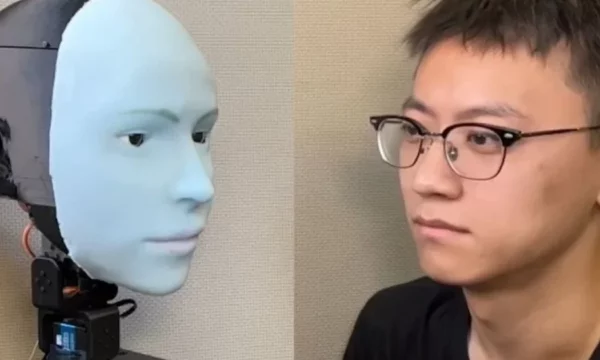Discover Emo, a groundbreaking humanoid robot developed by Columbia University, capable of predicting and replicating human smiles with uncanny accuracy. Learn how this technology aims to revolutionize human-robot interactions.
Introduction: In a remarkable fusion of technology and human emotion, Columbia University unveils Emo – a humanoid robot endowed with the extraordinary ability to predict and simulate human smiles. As the latest marvel in the realm of robotics, Emo holds the promise of transforming human-robot interactions by bridging the gap between artificial intelligence and nuanced nonverbal communication. Let's delve into the fascinating capabilities of this groundbreaking creation and its potential implications for the future of robotics.
Decoding Human Smiles: The Emo Phenomenon
Emo's remarkable prowess lies in its uncanny ability to anticipate human smiles moments before they occur and mirror them with astonishing precision. This innovative feat represents a significant leap forward in the quest to imbue robots with human-like characteristics.
Predictive Precision: Leveraging advanced AI models and high-resolution cameras, Emo employs predictive algorithms to anticipate human facial expressions with remarkable accuracy.
Bridging the Communication Gap: Realism Redefined
One of the chief challenges in human-robot interactions has been the inability of robots to replicate the nuanced nonverbal cues essential for effective communication. Emo seeks to address this limitation by offering a more authentic and immersive interaction experience.
Enhanced Realism: By replicating human smiles in real-time, Emo aims to create a more lifelike and engaging interaction environment, fostering deeper connections between humans and robots.
Behind the Scenes: The Making of Emo
At the heart of Emo's design lies a sophisticated infrastructure comprising high-resolution cameras, flexible plastic skin, and an intricate network of magnet motors. This intricate setup enables Emo to observe and mimic human expressions with remarkable precision.
Technical Ingenuity: Developed by a team led by Hod Lipson at Columbia University, Emo embodies the cutting-edge convergence of robotics and artificial intelligence, pushing the boundaries of what is possible in human-robot interaction.
Embracing the Future: Potential Applications
As Emo emerges as a pioneering force in robotics, its potential applications span a myriad of domains, from healthcare and customer service to entertainment and education.
Revolutionizing Industries: Emo's ability to predict and replicate human smiles opens doors to transformative applications across various sectors, heralding a new era of human-robot collaboration and innovation.
Conclusion: Embracing a New Era of Human-Robot Interaction
In the age of technological advancement, Emo stands as a testament to human ingenuity and innovation. With its ability to predict and simulate human smiles, Emo redefines the boundaries of what robots can achieve, paving the way for more authentic and meaningful interactions between humans and machines. As we embark on this journey into the future of robotics, Emo serves as a harbinger of a new era of empathy, understanding, and collaboration in the ever-evolving landscape of human-robot interaction.
https://youtu.be/AQtIXmcGt0g


Comments